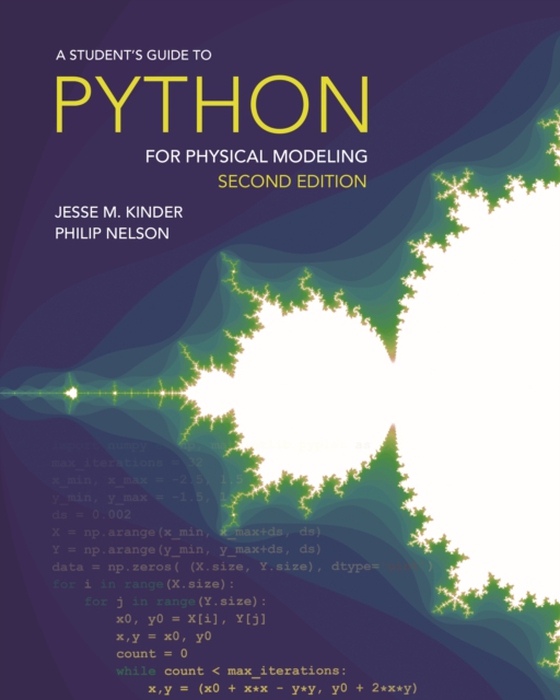
Student's Guide to Python for Physical Modeling e-bog
184,80 DKK
(inkl. moms 231,00 DKK)
A fully updated tutorial on the basics of the Python programming language for science studentsPython is a computer programming language that has gained popularity throughout the sciences. This fully updated second edition of A Student's Guide to Python for Physical Modeling aims to help you, the student, teach yourself enough of the Python programming language to get started with physical model...
E-bog
184,80 DKK
Forlag
Princeton University Press
Udgivet
3 august 2021
Længde
240 sider
Genrer
Physics
Sprog
English
Format
pdf
Beskyttelse
LCP
ISBN
9780691223667
A fully updated tutorial on the basics of the Python programming language for science studentsPython is a computer programming language that has gained popularity throughout the sciences. This fully updated second edition of A Student's Guide to Python for Physical Modeling aims to help you, the student, teach yourself enough of the Python programming language to get started with physical modeling. You will learn how to install an open-source Python programming environment and use it to accomplish many common scientific computing tasks: importing, exporting, and visualizing data; numerical analysis; and simulation. No prior programming experience is assumed.This guide introduces a wide range of useful tools, including:Basic Python programming and scriptingNumerical arraysTwo- and three-dimensional graphicsAnimationMonte Carlo simulationsNumerical methods, including solving ordinary differential equationsImage processingNumerous code samples and exercises-with solutions-illustrate new ideas as they are introduced. This guide also includes supplemental online resources: code samples, data sets, tutorials, and more. This edition includes new material on symbolic calculations with SymPy, an introduction to Python libraries for data science and machine learning (pandas and sklearn), and a primer on Python classes and object-oriented programming. A new appendix also introduces command line tools and version control with Git.
 Dansk
Dansk

